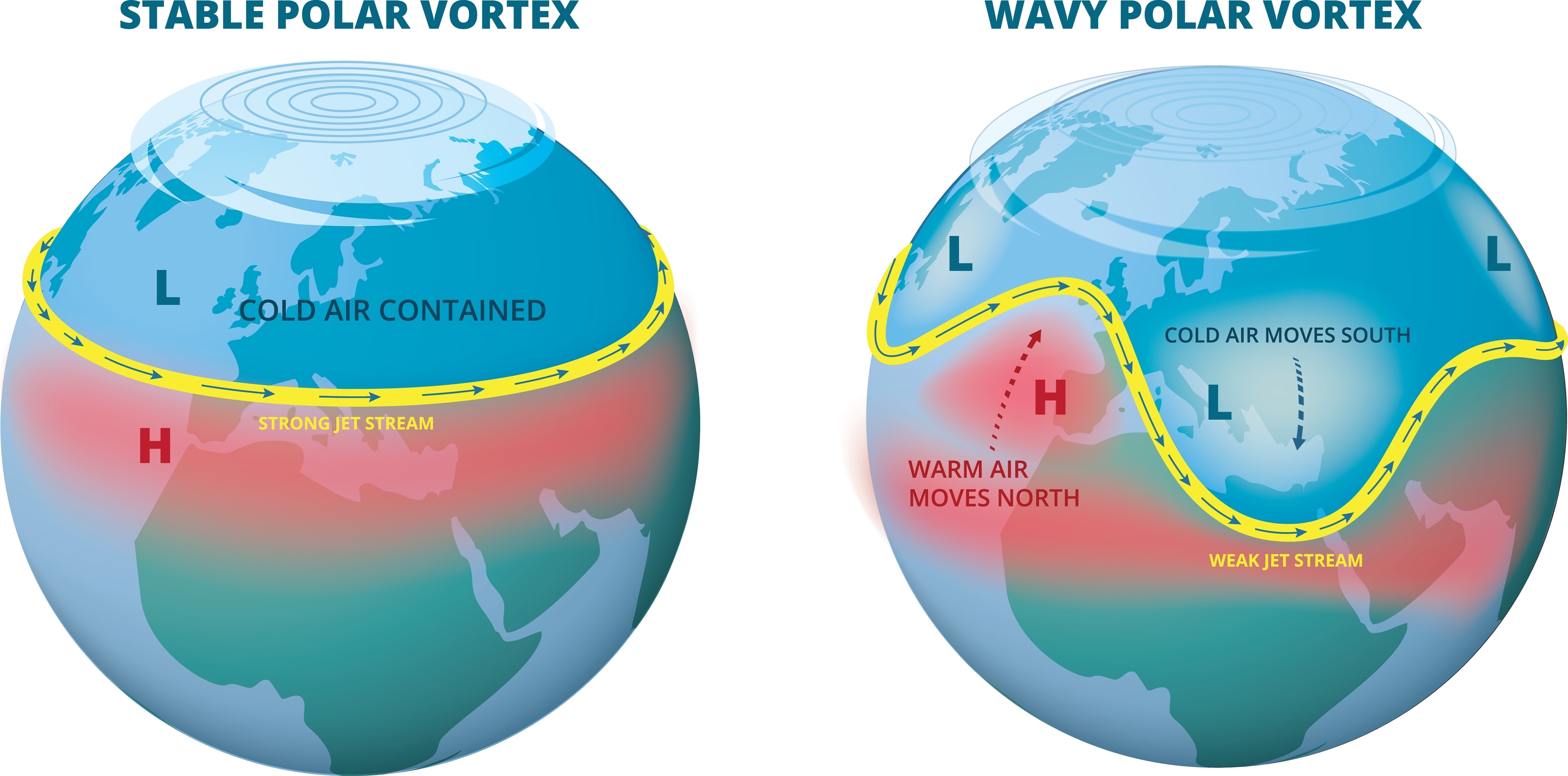The southern polar vortex is currently showing rare signs of extreme instability, leading to fears that it could collapse, bringing both icy blasts and extreme heatwaves to the southern hemisphere. Likewise, the northern polar vortex had yet another wild winter this year, and with climate change set to intensify these perilous polar patterns, we could be in for some increasingly dramatic weather in the years to come.
The polar vortices are strong stratospheric air currents that circulate over the Arctic and Antarctic during the winter months, trapping cold air above the poles. They are surrounded and enclosed by the jet streams, which act like barriers that prevent this icy polar air from spreading into the mid-latitudes.
However, every now and then, the stratosphere above the Arctic experiences a dramatic increase in temperature and pressure, destabilizing the northern polar vortex and causing it to split, change direction or collapse. When this occurs, the jet stream tends to become warped, allowing icy Arctic winds to encroach further south than they usually would, while warm air is drawn into the polar region.

When the polar vortex destabilizes, icy polar air moves into the mid-latitudes. Image credit: zombiu26/Shutterstock.com
Known as sudden stratospheric warming (SSW), this phenomenon caused the big freeze that gripped parts of the US in 2019. In early 2024, fluctuations in stratospheric pressure caused the northern polar vortex to change direction twice, bringing cold snaps to the northern hemisphere, although neither event was strong enough to significantly alter the shape of the jet stream.
Down in Antarctica, however, SSWs are much less common, with the only known instance occurring in 2002. Yet that could be about to change, with a series of stratospheric temperature increases since last month raising fears that the southern polar vortex could be about to split.
The first of these was detected in mid-July, when wind speeds in the vortex slowed from their typical velocity of 300 kilometers per hour to just 230 kilometers per hour (186 to 143 miles per hour). This was accompanied by a temperature spike of about 20 degrees Celsius (36 Fahrenheit) above the average.
While these fluctuations were insufficient to trigger an SSW, they were followed by a second slowdown as temperatures rose once again in early August. This event has resulted in cold Antarctic air escaping from the polar region and blasting parts of Australia, New Zealand, and South America with wet and icy weather.
At the same time, warm air from the mid-latitudes has been able to push south into Antarctica, triggering a record-breaking heatwave.
It’s currently unclear how the situation will play out, with some predictions suggesting the southern polar vortex may soon stabilize, while other models hint at a drastic collapse. In the latter scenario, a destabilized jet stream will most likely disrupt another weather system called the southern annular mode, sending it into what’s known as a negative phase.
This would then result in an exceptionally dry and hot summer across Australasia and South America.
At present, scientists are uncertain what causes the polar vortices to destabilize in such a manner, although there’s growing evidence to suggest that rising global temperatures due to human-induced climate change may be involved. For instance, a study published this month provides evidence that declining Antarctic sea ice is associated with slower stratospheric wind speeds, highlighting the role that rising ocean temperatures play in messing with the polar vortices.
Furthermore, while Arctic sea ice has been in drastic decline for years, the situation at the southern pole was until recently thought to be relatively stable. Yet a worrying decline over the past few years has suggested that both poles may now be in a state of extreme flux, with possibly massive implications for the polar vortices.
Source Link: Something’s Going On With The Polar Vortex, And It Could Have Consequences